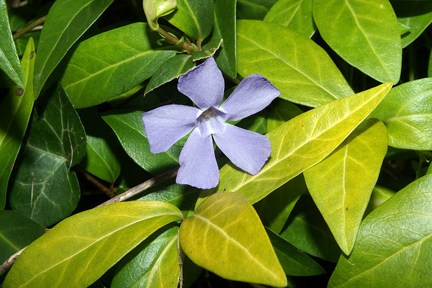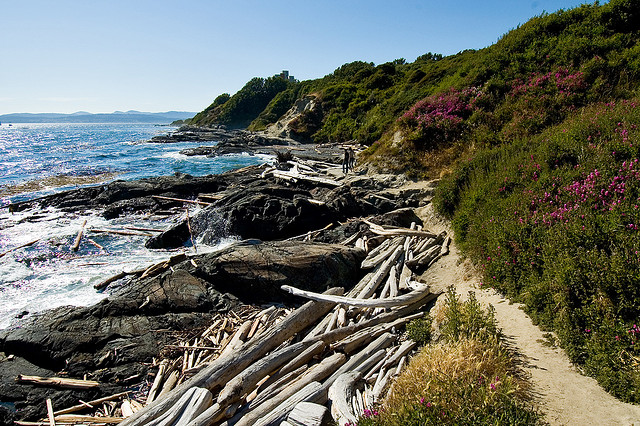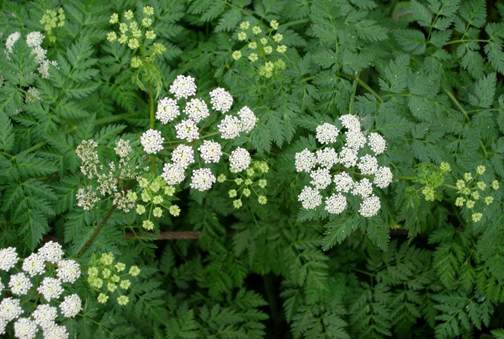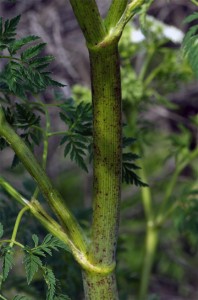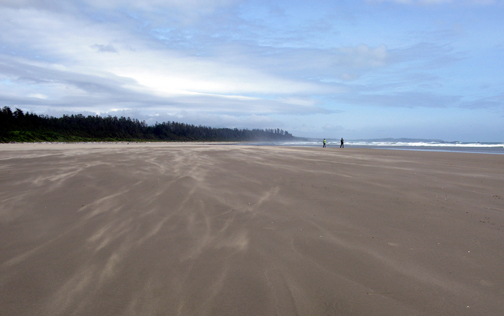
Alien Invaders exhibit – backdrop panel #1 (exhibit area 1)

Alien Invaders exhibit – backdrop panel #2 (exhibit area 1)

Alien Invaders exhibit – backdrop panel #3 (exhibit area 2)
These image files are intentionally large, so that you can read the text. While you wait for them to load, feel free to read about the project.
The mission: Create an exhibit for less than $5,000 and in less than two months. Use existing trade-show exhibit armatures, and scrounge props and artifacts from researchers’ labs.
An extra challenge: Design and produce the exhibit in such a way that it showcases the capabilities of the large-scale printer that was available for use by researchers at Pacific Forestry Centre and maintains all the design guidelines prescribed for Natural Resources Canada displays and publications. As well, the exhibit had to satisfy requirements of the Official Languages Act, and all interpretive panels had to include text in both English and French. I developed the project plan for Alien Invasives, an exhibit to be installed on the mezzanine level of the Pacific Forestry Centre in time for National Forest Week. I worked with researchers, technicians and managers from Pacific Forestry Centre to develop the interpretive concept and text for the exhibit panels, large and small. Avril Goodall, the Natural Resources Canada graphic designer, determined and executed the design concept.
The Big Idea: Scientists and policy makers at the Canadian Forest Service, Natural Resources Canada, were working to protect Canada’s forests, economy and trade from alien invasive insects.
Audience: school teachers and students who visited Pacific Forestry Centre for National Forest Week’s Forest Fair celebration, staff and visitors.
Key Messages:
- Invasive alien forest species are non-native organisms that thrive in Canada’s forests.
- They can be introduced to Canada’s forests both intentionally and inadvertently, through many different pathways.
- They can seriously alter Canada’s forest ecosystems, causing environmental, economic and social damage that can be irrevocable.
- The Government of Canada (Natural Resources Canada and the Canadian Food Inspection Agency) is working to prevent the introduction and spread of invasive alien forest species, and to protect Canada’s forests, economies, communities and trade.
Design and Installation: Each of the attached panels was attached to a 3.66 x 2.44-metre trade-show exhibit armature. Two of the backdrop panels were placed side by side in an arc (exhibit area 1), with the third backdrop facing it across the mezzanine (exhibit area 2). The backdrop panels were designed according to departmental common-look-and-feel design specifications, thereby allowing all other panels greater flexibility in design and presentation. Banners (~8 x 2 metres) with giant, high-resolution images of invasive species draped from steel cables framed each display area. In addition to the backdrop panels shown here, displays with interpretive signage in exhibit area 1 included:
- A vine maple sapling, with holes drilled into the trunk. Life-size models of Asian longhorned beetles were glued into the holes.
- A wooden spool for transporting cable, with an interpretive panel discussing how wooden packaging materials such as industrial spools and pallets transported many invasive species from other countries to Canada.
- A display box of various invasive beetle specimens, on loan from the Pacific Forestry Centre entomology collection.
In exhibit area 2, displays with interpretive signage included:
- A 1/2-metre-long, super-sized model of a mountain pine beetle.
- A tree cookie and debarked log section showing beetle galleries.
- A funnel trap and bag, similar to those used in a recent lab study on how beetles breed and colonize new trees.
In addition, Avril Goodall designed, fabricated and installed a mobile of Asian gypsy moths in the middle of the Pacific Forestry Centre Atrium to complement the exhibit.

